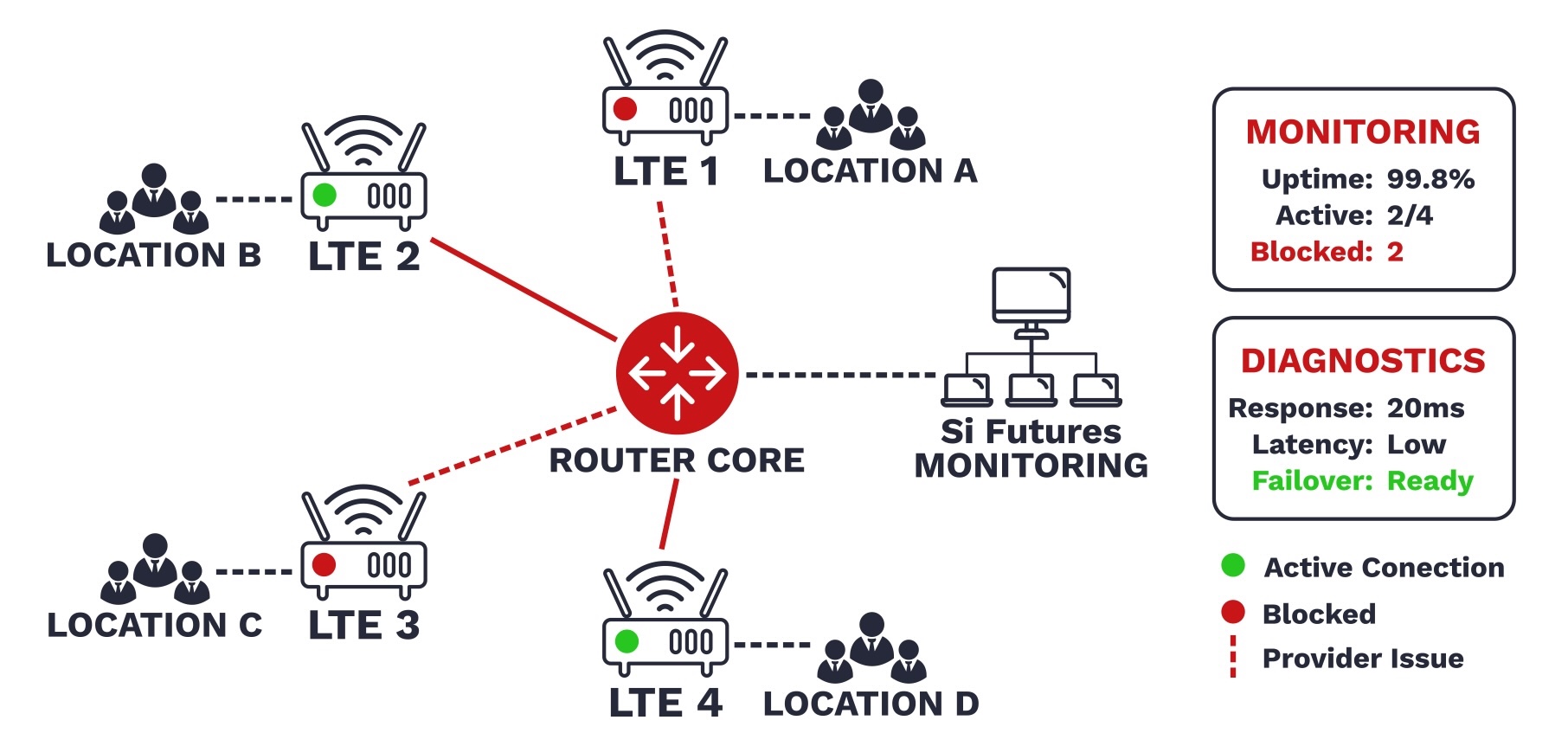What Happened
Saturday afternoon, multiple locations experienced critical connectivity issues that left point-of-sale systems and kitchen service in disarray.
The issue? A random LTE blocking event from a network provider disrupted the core of their network infrastructure. No notice. No clear cause. Just sudden failure at the worst possible moment.
With two locations already impacted and staff overwhelmed, their previous experience with IT vendors had left them cautious — and understandably frustrated.

But this is where the difference between “technical support” and true partnership becomes clear
But this is where the difference between “technical support” and true partnership becomes clear.
Immediate, On-Site Response — Not Lip Service
Our team mobilised within hours.
We didn’t wait for Monday. We didn’t send another status update. We showed up.
That’s what emergency response should look like — calm, systematic action on behalf of the client. No delays, no finger-pointing, and no reliance on third-party escalation queues.
Methodical Under Pressure
Even under time pressure, we stayed disciplined in our approach:
- Identified the root cause: Network provider router blocking
- Isolated the failure impact across the network
- Coordinated directly with the provider for resolution
- Implemented interim connectivity to keep operations moving
Throughout, we maintained clear, honest communication with the client’s executive and operations teams — especially as stress levels rose.
Why This Matters
When IT fails in the middle of service delivery, it’s not a technical problem. It’s a business risk.
Every minute of downtime:
- Impacts customer experience
- Pressures frontline staff
- Creates reputational damage
And what matters most to the client in that moment? That someone takes ownership.
Partnership Means Owning the Outcome
This wasn’t about ticking a service level box. It was about delivering continuity when the business needed it most.
We didn’t treat this as a networking issue. We treated it as a business-critical event — because that’s exactly what it was.
By the end of the weekend, systems were stable. Confidence was restored. And the CEO of the restaurant group made it clear: what stood out wasn’t just the technical fix — it was the way we showed up, took control, and protected their business.
The Takeaway
When emergencies hit, vendor relationships often show their limits. Strategic partnerships, on the other hand, show their value.
At Si Futures, we take continuity seriously. Our clients don’t wait until Monday to fix a weekend crisis — because we don’t operate on vendor timelines. We operate on business outcomes.
If your current provider can’t respond when operations are on the line — let’s talk about emergency response partnerships. You don’t need more alerts. You need a partner who’s already moving.

